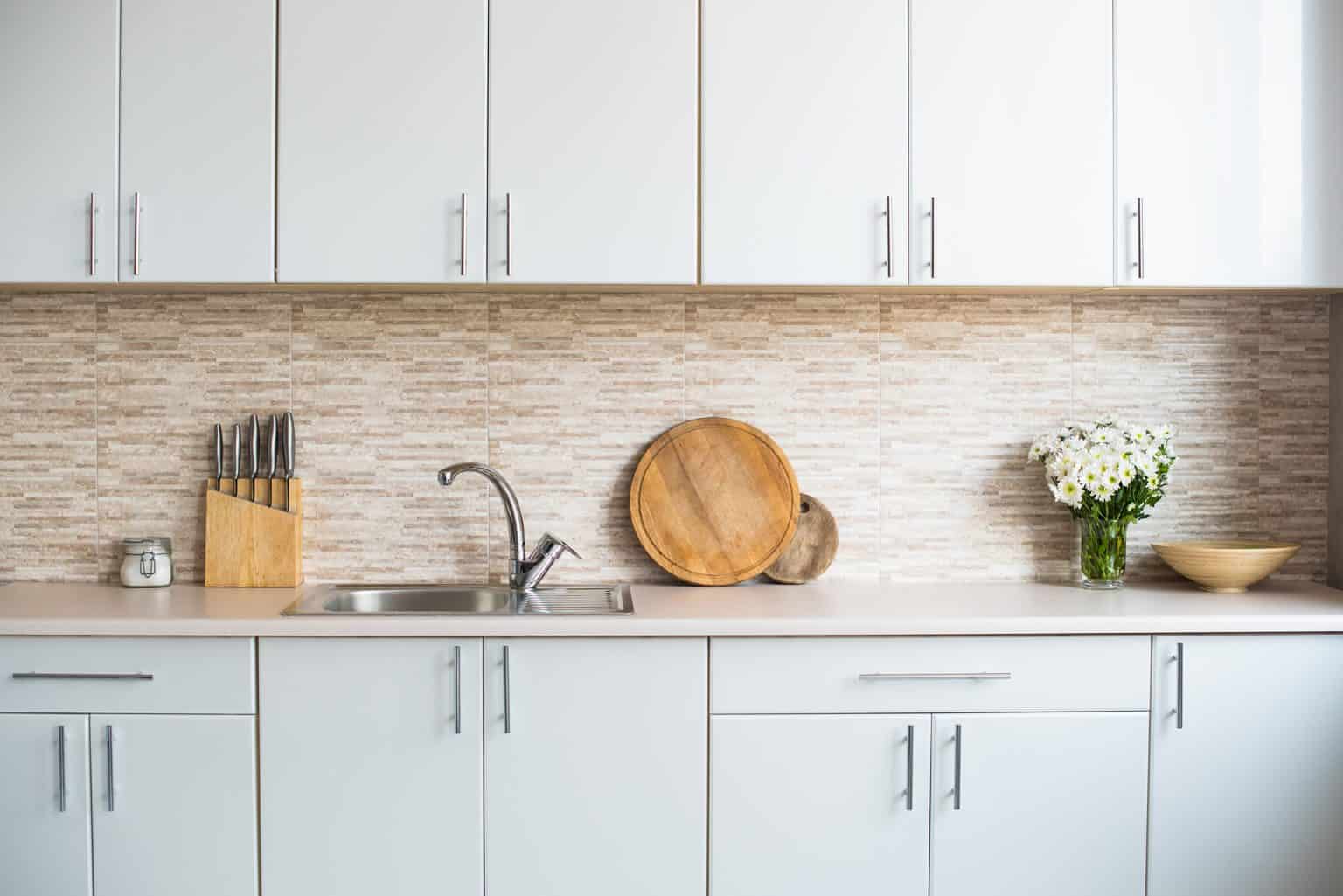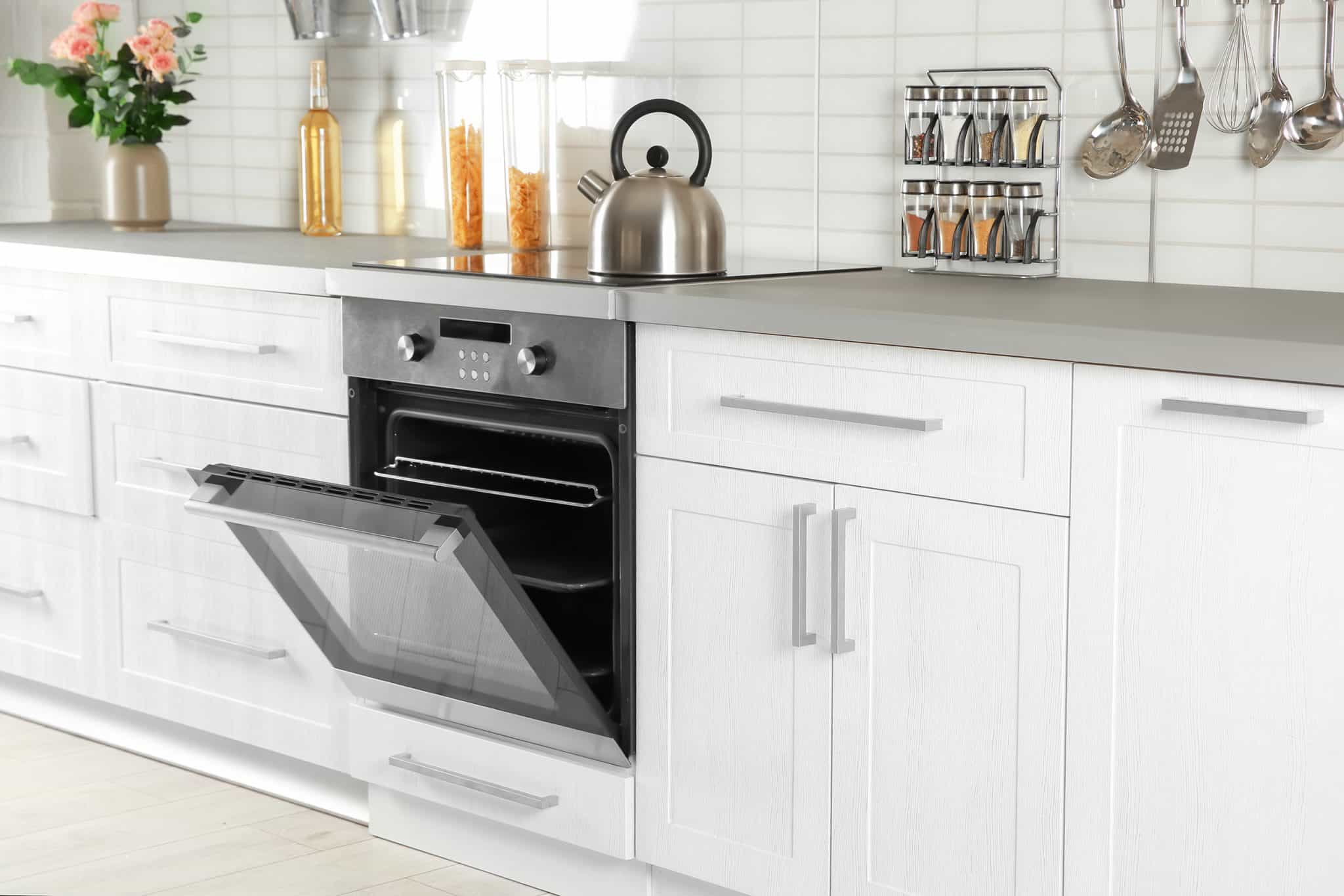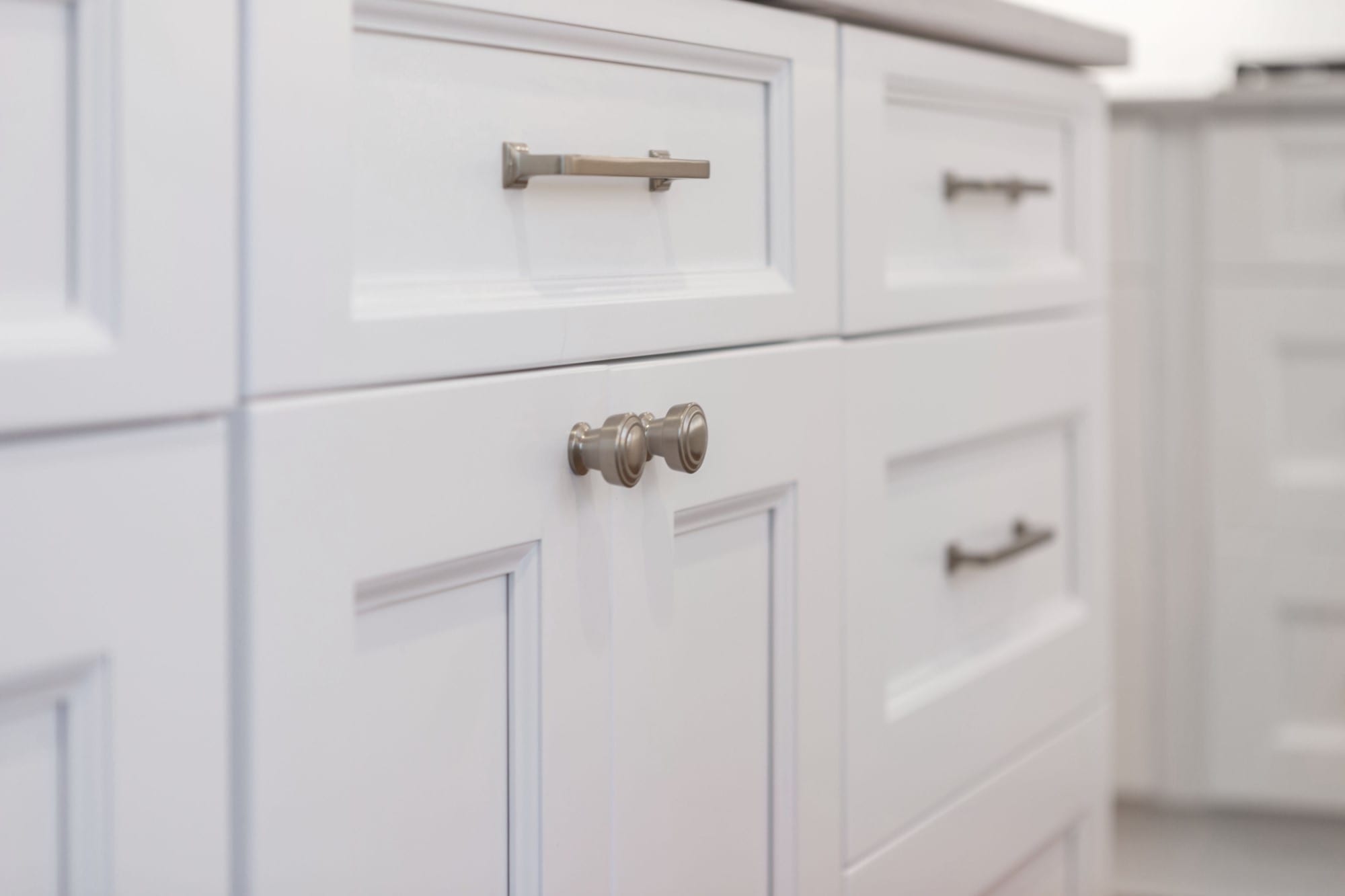Types of Handles for Shaker Cabinets

Choosing the right handles can dramatically impact the overall look and feel of your shaker cabinets. The style, material, and finish of your hardware will significantly influence the aesthetic, from modern minimalist to rustic farmhouse. Careful consideration of these factors will ensure your cabinets are both functional and visually appealing.
Handle Styles and Their Aesthetic Impact
Shaker cabinets, known for their clean lines and simple elegance, pair well with a variety of handle styles. The choice often depends on personal preference and the overall design scheme of the kitchen.
- Cup Pulls: These recessed pulls offer a sleek, minimalist look, ideal for modern or contemporary kitchens. They maintain the clean lines of shaker cabinets without being overly prominent.
- Knobs: Knobs provide a classic and traditional feel, working well in both traditional and transitional kitchens. They add a touch of personality and can range from simple to ornate designs.
- Bar Pulls: These long, horizontal pulls offer a more contemporary and streamlined aesthetic, perfect for modern or minimalist kitchens. They are particularly well-suited for larger cabinet doors and drawers.
- Apron Pulls: These distinctive pulls feature a decorative apron, offering a unique and often more traditional or rustic look.
Handle Material Durability Comparison, Handles for shaker kitchen cabinets
The durability of your cabinet handles is crucial for longevity. Different materials offer varying levels of resistance to wear and tear.
| Material | Durability | Pros | Cons |
|---|---|---|---|
| Brass | High; can tarnish but is easily polished | Classic look, easily polished, durable | Can tarnish, requires regular cleaning |
| Nickel | Medium; susceptible to scratches | Versatile, matches many styles, relatively inexpensive | Can scratch easily, may show wear over time |
| Stainless Steel | High; resistant to corrosion and scratches | Durable, resistant to corrosion, easy to clean | Can be less aesthetically pleasing than other options, can show fingerprints |
Handle Finishes and Cabinet Color Combinations
The finish of your cabinet handles can greatly influence the overall look. Careful consideration of the finish in relation to the cabinet color can create a harmonious and stylish kitchen.
- Matte Black Handles: These create a striking contrast against white shaker cabinets, adding a touch of modern sophistication. They also complement gray cabinets nicely, offering a sleek and contemporary feel. On navy cabinets, they provide a bold and dramatic effect.
- Brushed Nickel Handles: This versatile finish works well with white, gray, and navy shaker cabinets, offering a subtle yet elegant touch. It provides a more understated look compared to matte black.
- Oil-Rubbed Bronze Handles: This finish lends a warm, rustic feel, particularly well-suited to white or gray shaker cabinets. It can create a more traditional or transitional look.
Handle Placement on Shaker Cabinet Doors and Drawers
The placement of handles can subtly but significantly impact the visual appeal of your shaker cabinets.
Handles for shaker kitchen cabinets – Imagine a visual representation: A white shaker cabinet door. One image shows a cup pull centrally placed, emphasizing the clean lines of the door. Another image depicts a bar pull positioned horizontally near the bottom of the door, creating a more modern, linear feel. A third image showcases knobs placed on either side of a drawer, maintaining symmetry and balance. The placement of handles, whether centrally aligned, offset, or grouped, significantly influences the overall visual effect, impacting the perceived balance and proportion of the cabinetry.
Choosing the Right Handle Size and Placement: Handles For Shaker Kitchen Cabinets

Selecting the perfect handle size and placement for your shaker cabinets is crucial for both aesthetics and functionality. A poorly chosen handle can detract from the overall design, while an awkwardly placed one can make opening and closing cabinets a frustrating experience. This section will guide you through the process of making informed decisions to achieve both beauty and practicality.
Choosing the right handle size depends heavily on the dimensions of your cabinet doors and drawers. Larger doors and drawers naturally call for larger handles to provide a comfortable and easy grip. Conversely, smaller cabinets benefit from smaller, more delicate handles to maintain visual balance and avoid overwhelming the design. The style of the handle also plays a role; a long, slender bar pull might suit a large drawer, whereas a small knob would be more appropriate for a smaller cabinet door.
Handle Size and Drawer/Door Dimensions
The relationship between handle size and cabinet dimensions is best understood through careful measurement. Generally, the handle should be proportionate to the size of the cabinet face. For instance, a large drawer measuring 36 inches wide might comfortably accommodate a 12-inch bar pull, providing ample gripping space. A smaller drawer, say 18 inches wide, might only need a 6-inch pull, or even a series of smaller knobs. Always consider the style of the handle; a substantial, ornate handle on a small cabinet can appear disproportionate and clumsy. Conversely, a tiny, insignificant handle on a large cabinet will seem lost and ineffective.
Ergonomic Considerations for Handle Types and Sizes
Different handle types offer varying levels of ergonomic comfort. Knob handles are compact and suitable for smaller cabinets but may require more dexterity to open, especially for those with limited hand mobility. Cup pulls provide a good balance of style and practicality, offering a comfortable grip without taking up excessive space. Bar pulls, particularly longer ones, are generally considered the most ergonomic, providing ample surface area for a firm grip, making them ideal for larger doors and drawers. However, extremely long bar pulls might be less suitable for smaller cabinets or those frequently opened and closed by children. Consider the typical users of the cabinets and their physical capabilities when selecting handle type and size.
Measuring Cabinet Doors and Drawers for Accurate Handle Placement
Accurate measurement is paramount for aesthetically pleasing and functional handle placement. Begin by measuring the width of the cabinet door or drawer face. Next, determine the center point of the face by dividing the width measurement by two. This center point will serve as the ideal location for the handle’s center. For example, an 18-inch wide drawer would have its handle centered at 9 inches. When installing multiple handles on a large drawer or door, evenly space them along the face, maintaining consistent distances between each handle’s center point. Remember to account for the handle’s dimensions itself when marking the placement points to ensure sufficient clearance. A visual guide would show a tape measure placed across the cabinet face, with markings indicating the center point and the handle placement points. The process is visually straightforward, requiring only a tape measure and a pencil for marking. Consider using painter’s tape to mark the placement points before drilling, allowing for adjustments if necessary.
Installing Shaker Cabinet Handles

Installing shaker cabinet handles might seem daunting, but with the right tools and a methodical approach, it’s a manageable DIY project. This guide will walk you through the process for various handle types, highlighting crucial steps to ensure a professional-looking finish. Remember to always prioritize safety and double-check your measurements before drilling.
Installing Different Handle Types
Proper handle installation depends heavily on the handle type. Different handles require slightly different techniques and tools. The following steps provide a general guideline, but always refer to the manufacturer’s instructions for specific details.
- Preparation: Gather your tools: drill, drill bits (pilot bit and screw bit sized to your screws), measuring tape, pencil, level, screwdriver (or drill with appropriate bit for screw driving), and the handles themselves. Ensure the cabinet doors are securely fastened to their frames. For cup pulls, you’ll also need a center punch.
- Marking Locations: Using a tape measure and level, carefully mark the desired handle placement on each cabinet door. Maintain consistent spacing between handles for a uniform look. Consider the door’s size and the handle’s design when choosing the location.
- Drilling Pilot Holes (Knobs and Pulls): Use a pilot bit slightly smaller than the screw diameter to drill pilot holes at your marked locations. This prevents the wood from splitting and ensures accurate screw placement. For cup pulls, this step is crucial for precise placement of the cup itself.
- Attaching the Handles: Insert the screws into the pilot holes and carefully attach the handles. Use a screwdriver or drill to tighten the screws, being careful not to overtighten and damage the wood or the handle.
- Knobs: Knobs typically have a single screw that passes through the knob and into the cabinet door.
- Pulls: Pulls usually have two screws, one on each side.
- Cup Pulls: Cup pulls require more precision. See the detailed illustration below for specific instructions.
Avoiding Common Installation Mistakes
Several common mistakes can lead to unsatisfactory results. Avoiding these will ensure a professional finish.
- Improper Drilling: Always use pilot holes to prevent wood splitting. Use the correct sized drill bit for both the pilot hole and the screw.
- Misaligned Handles: Use a level to ensure that your handle markings are perfectly level and consistent across all cabinet doors. Double-check before drilling.
- Overtightening Screws: Overtightening can strip the screw holes or damage the handle. Tighten the screws firmly but gently.
- Incorrect Handle Placement: Consider ergonomics; handles should be easily accessible and comfortable to use.
Cup Pull Installation
This detailed illustration describes the installation of a cup pull.
Imagine a rectangular cabinet door. First, measure and mark the center point of the door horizontally and vertically. This is where the center of your cup pull will be. Use a center punch to create a small indentation at this point. This provides a starting point for drilling and prevents the drill bit from wandering.
Next, use a small pilot drill bit (approximately 1/16 inch or 1.5mm for a typical cup pull) to drill a hole through the marked center point. This hole should be just deep enough to allow the cup’s mounting mechanism to sit flush with the door’s surface. The depth will depend on the specific cup pull’s design. Then, using a slightly larger bit (the size will be specified by the manufacturer, usually around 3/8 inch or 10mm for a typical cup pull), drill two more pilot holes, approximately 1.5 inches (3.8cm) apart, centered horizontally on the door. These will be used for the mounting screws. The exact spacing will be dictated by the cup pull’s template or instructions. Once the holes are drilled, insert the cup pull, aligning it with the pilot holes. Finally, insert and tighten the screws. Ensure the screws are tightened securely but not over-tightened. The cup pull should sit firmly and flush against the cabinet door. The tools needed are a measuring tape, pencil, center punch, a drill, and appropriate drill bits.
